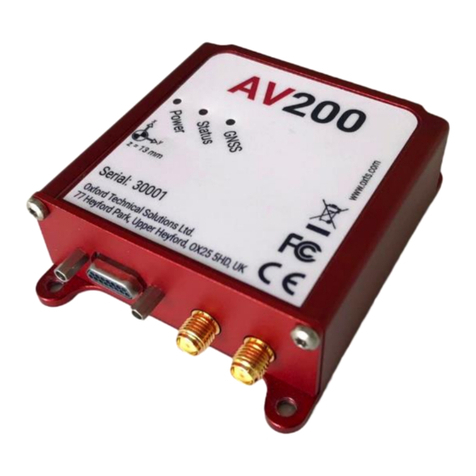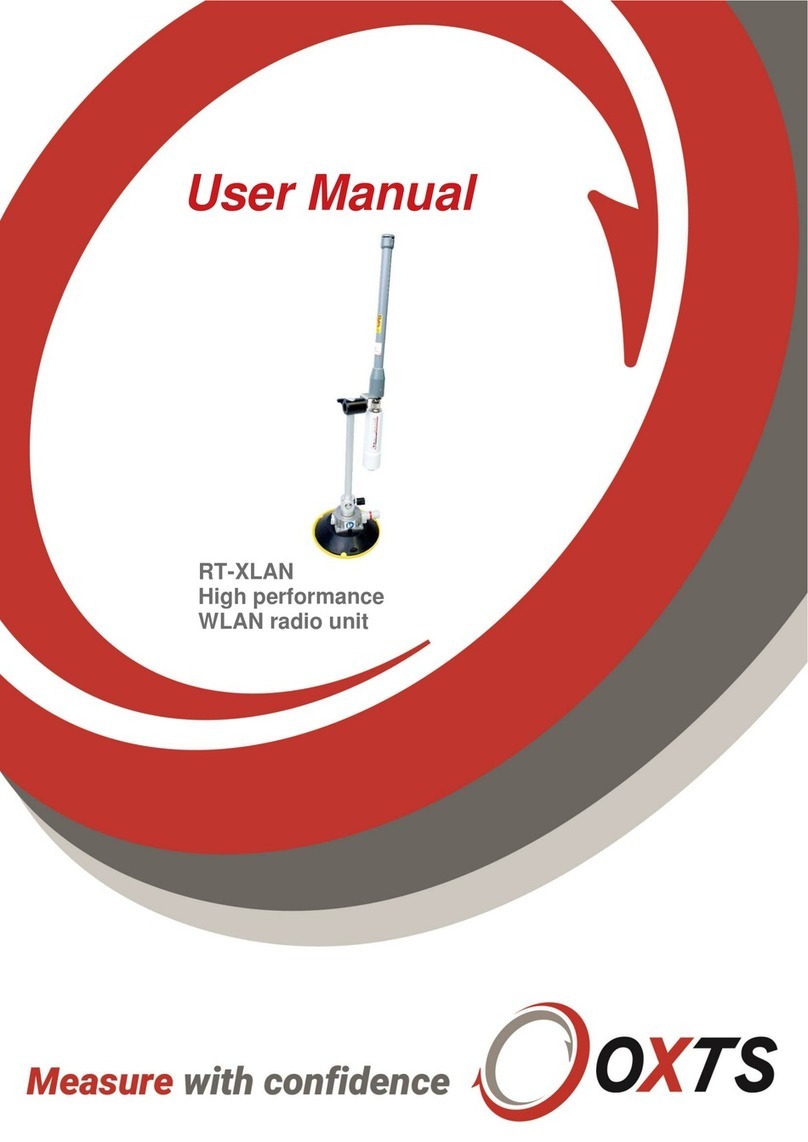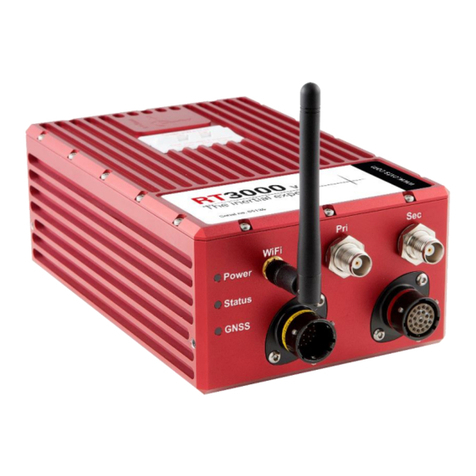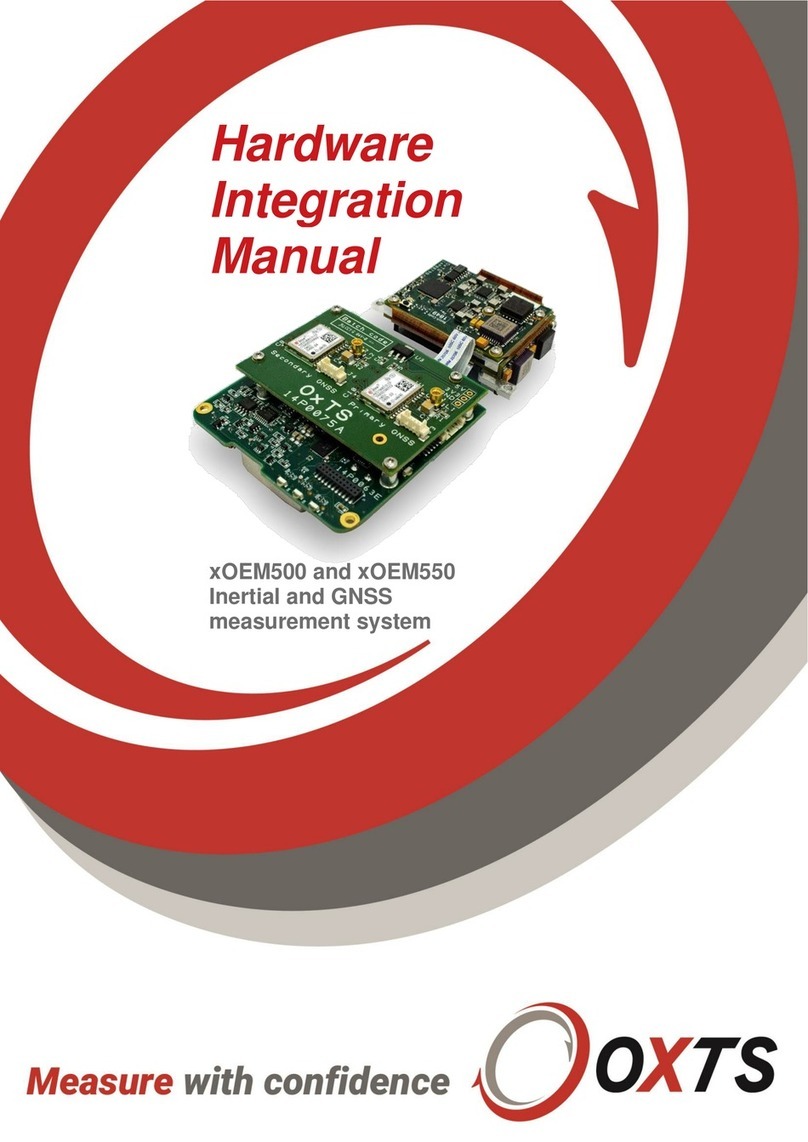
10
Oxford Technical Solutions
Introduction
The RT family of inertial navigation system (INS) devices, are instruments for making
precision measurements of motion in real-time.
There are three divisions within the RT family; RT2000s, RT3000s and RT4000s—and
each division contains a number of different models. The difference between the
divisions is described in more detail in the “RT product family” section on page 13.
From June 2014, all products in the RT family—except RT2500s, will be built to a new
specification called v2. These v2 devices can achieve 1 cm RTK accuracy in both real-
time and post-process, instead of the 2 cm accuracy of previous models. While the
existing model names have been kept for continuity, a v2 suffix denotes devices built to
the new specification. The only significant change is for customers using a DGNSS
subscription service, as v2 devices only support TerraStar, not OmniSTAR.
To obtain high-precision measurements, the RT uses mathematical algorithms developed
for use in fighter aircraft navigation systems. An inertial sensor block with three
accelerometers and three gyros (angular rate sensors) is used to compute all the outputs.
A WGS 84 modelled strapdown navigator algorithm compensates for earth curvature,
rotation and Coriolis accelerations, while measurements from high-grade kinematic
GNSS receivers update the position and velocity navigated by the inertial sensors. This
innovative approach gives the RT several distinct advantages over systems that only use
GNSS:
•The RT has a high (100 Hz or 250 Hz) update rate and a wide bandwidth.
•The outputs are available with very low, 3.5 ms latency.
•All outputs remain available continuously during GNSS blackouts when, for
example, the vehicle drives under a bridge.
•The RT recognises jumps in GNSS position and ignores them.
•The position and velocity measurements the GNSS makes are smoothed to reduce
the high-frequency noise.
•The RT makes many measurements GNSS cannot, for example acceleration, angular
rate, heading, pitch and roll.
An RT system processes data in real-time. The real-time results are output via an RS232
serial port, over 10/100 Base-T Ethernet using a UDP broadcast and on CAN bus.
Outputs are time-stamped and refer to GPS time; a 1PPS timing sync can be used to give
very accurate timing synchronisation between systems. The inertial measurements are
synchronised to the GPS clock.

































